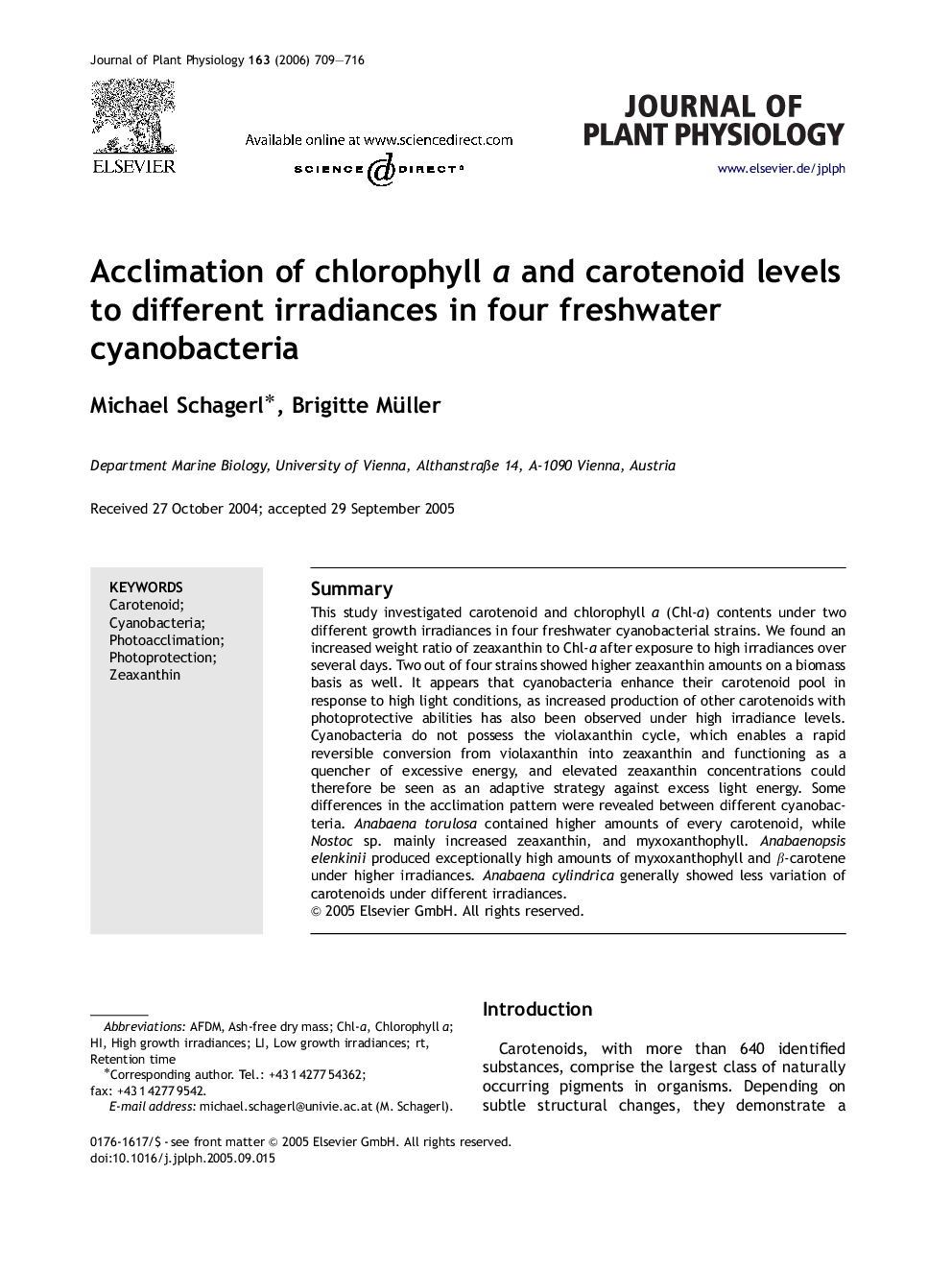| Article ID | Journal | Published Year | Pages | File Type |
|---|---|---|---|---|
| 2057476 | Journal of Plant Physiology | 2006 | 8 Pages |
SummaryThis study investigated carotenoid and chlorophyll a (Chl-a) contents under two different growth irradiances in four freshwater cyanobacterial strains. We found an increased weight ratio of zeaxanthin to Chl-a after exposure to high irradiances over several days. Two out of four strains showed higher zeaxanthin amounts on a biomass basis as well. It appears that cyanobacteria enhance their carotenoid pool in response to high light conditions, as increased production of other carotenoids with photoprotective abilities has also been observed under high irradiance levels. Cyanobacteria do not possess the violaxanthin cycle, which enables a rapid reversible conversion from violaxanthin into zeaxanthin and functioning as a quencher of excessive energy, and elevated zeaxanthin concentrations could therefore be seen as an adaptive strategy against excess light energy. Some differences in the acclimation pattern were revealed between different cyanobacteria. Anabaena torulosa contained higher amounts of every carotenoid, while Nostoc sp. mainly increased zeaxanthin, and myxoxanthophyll. Anabaenopsis elenkinii produced exceptionally high amounts of myxoxanthophyll and β-carotene under higher irradiances. Anabaena cylindrica generally showed less variation of carotenoids under different irradiances.
